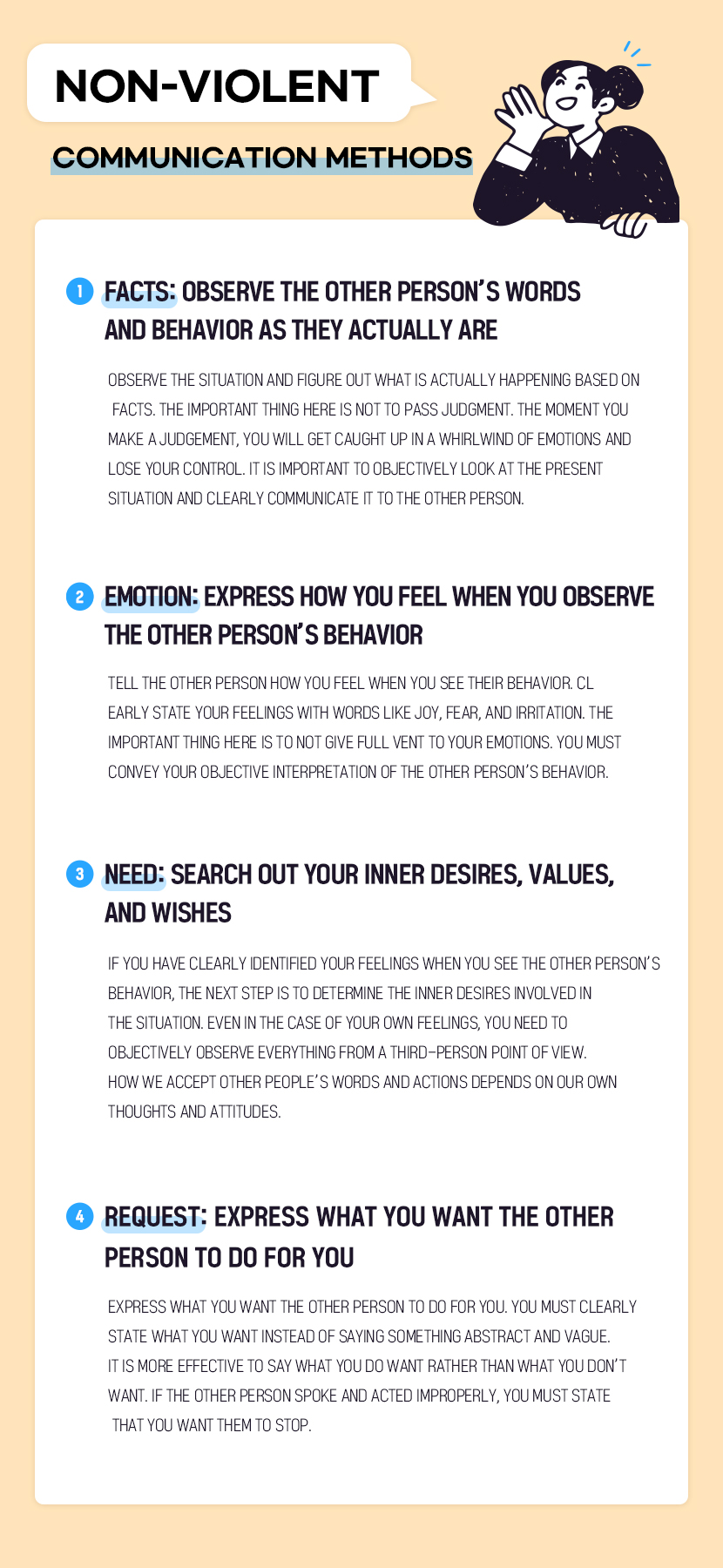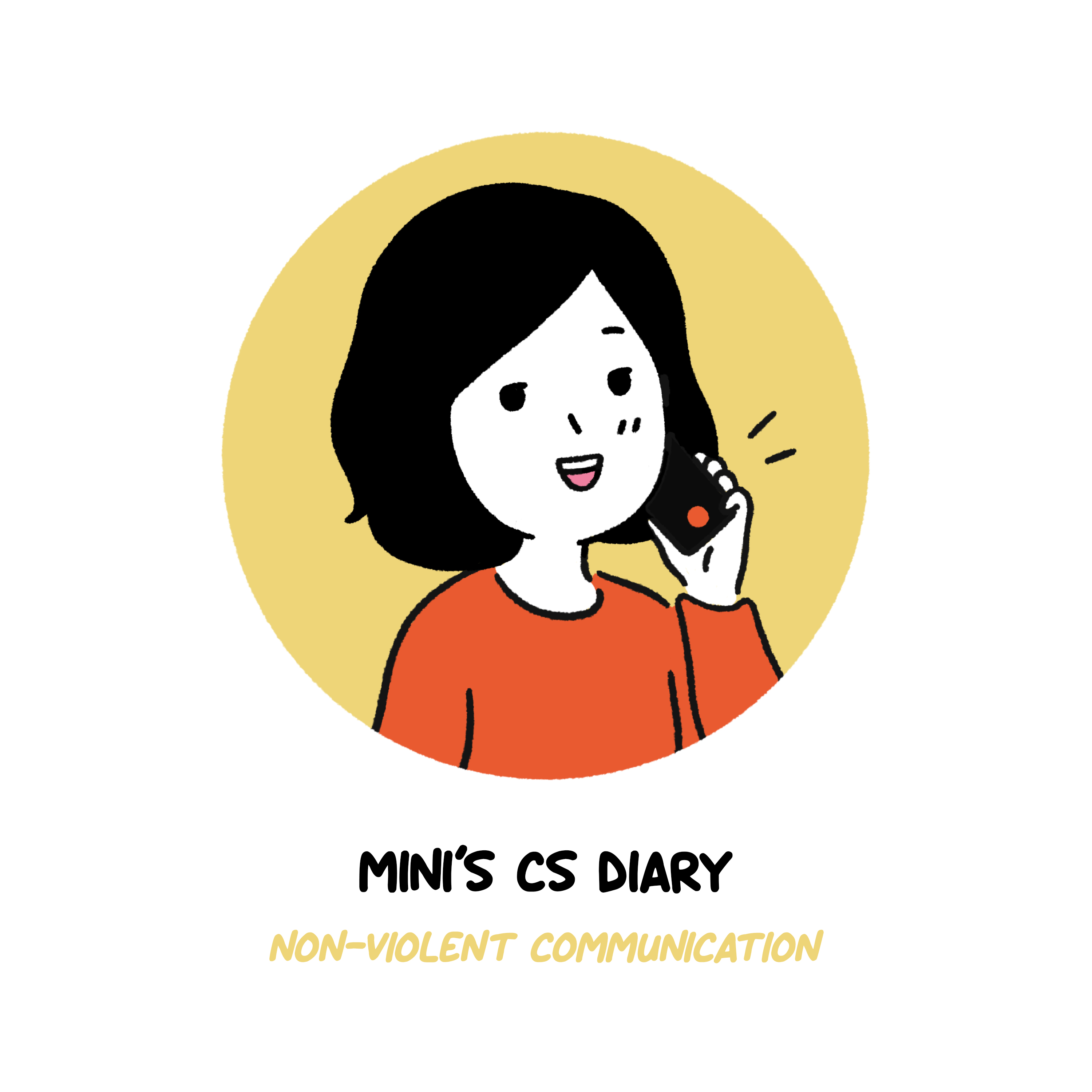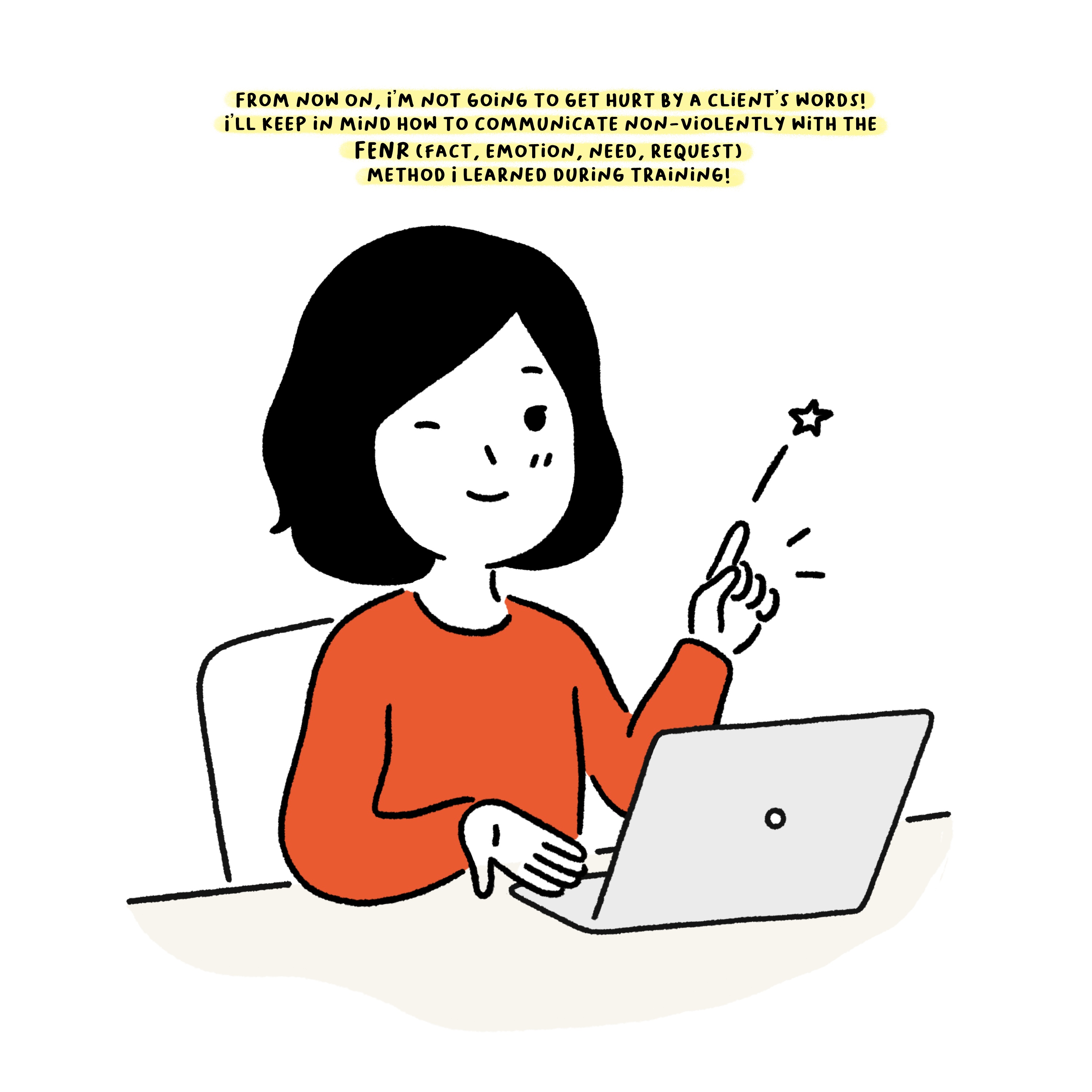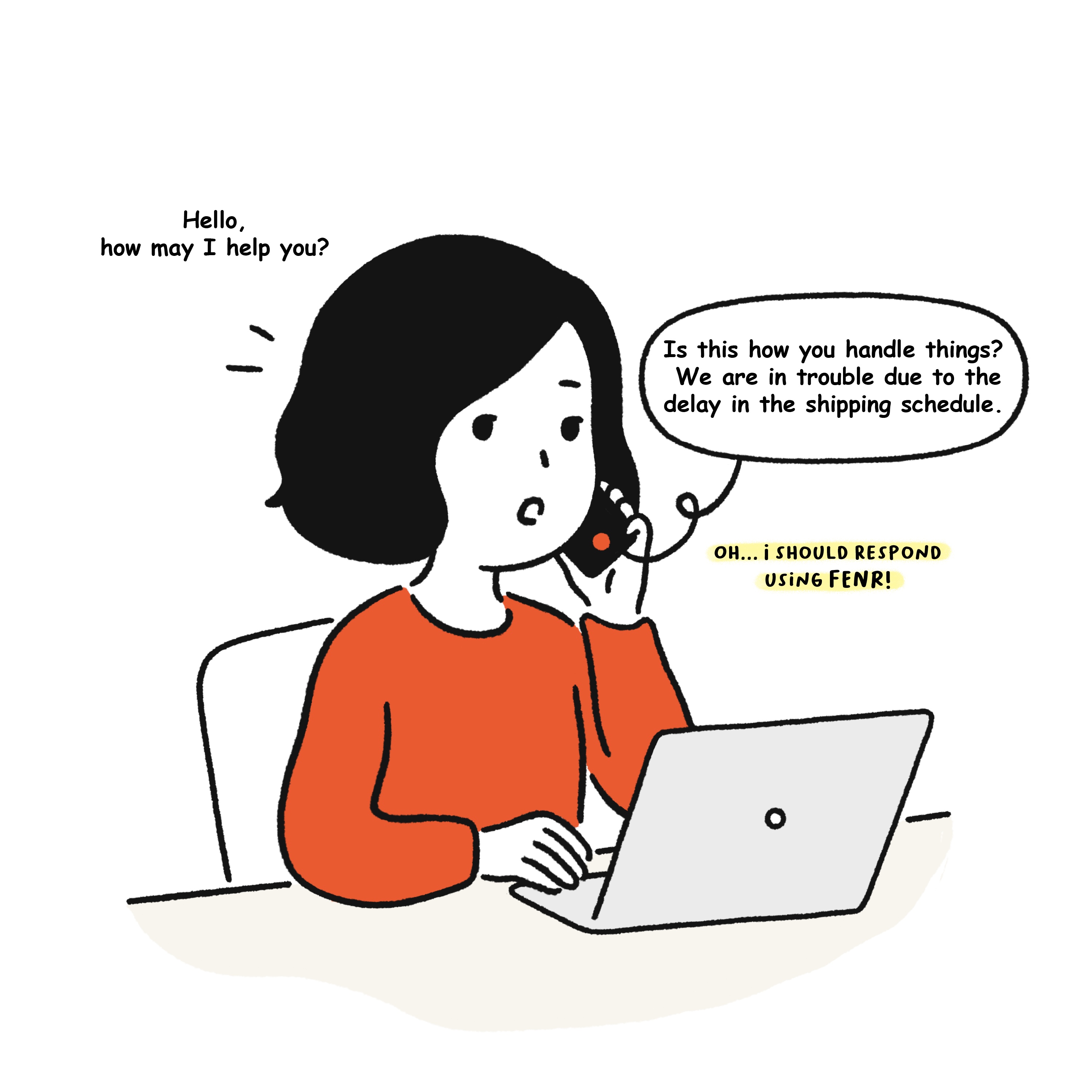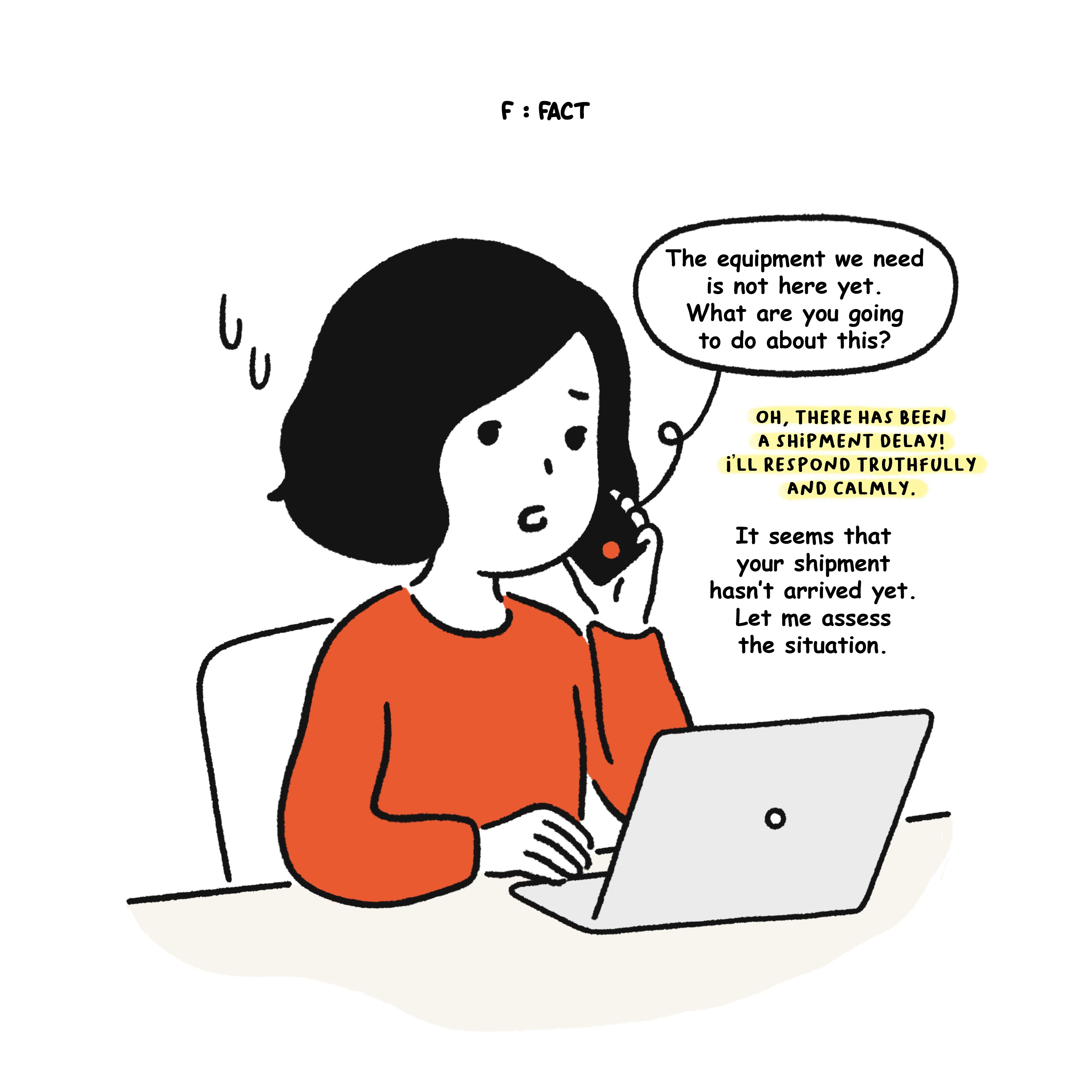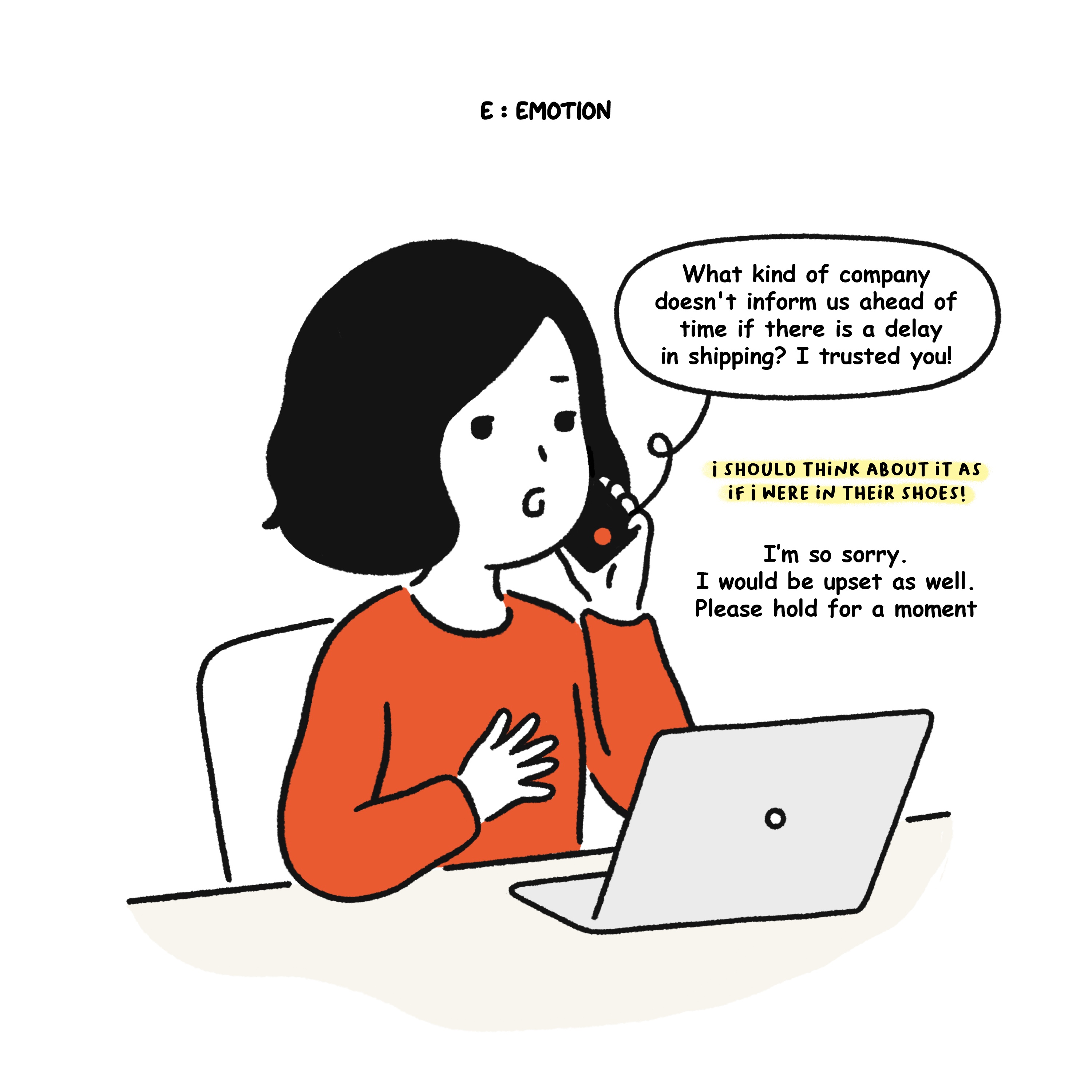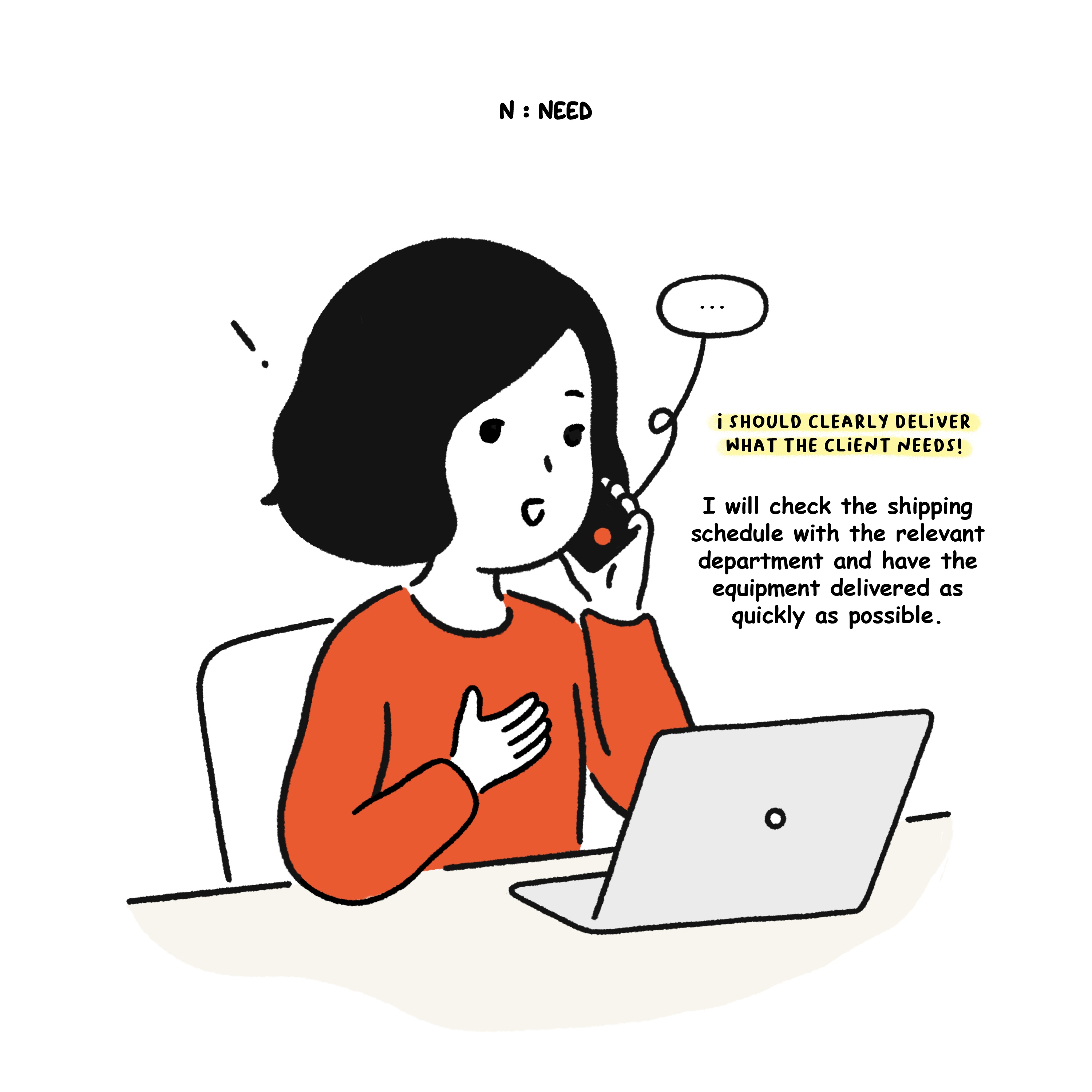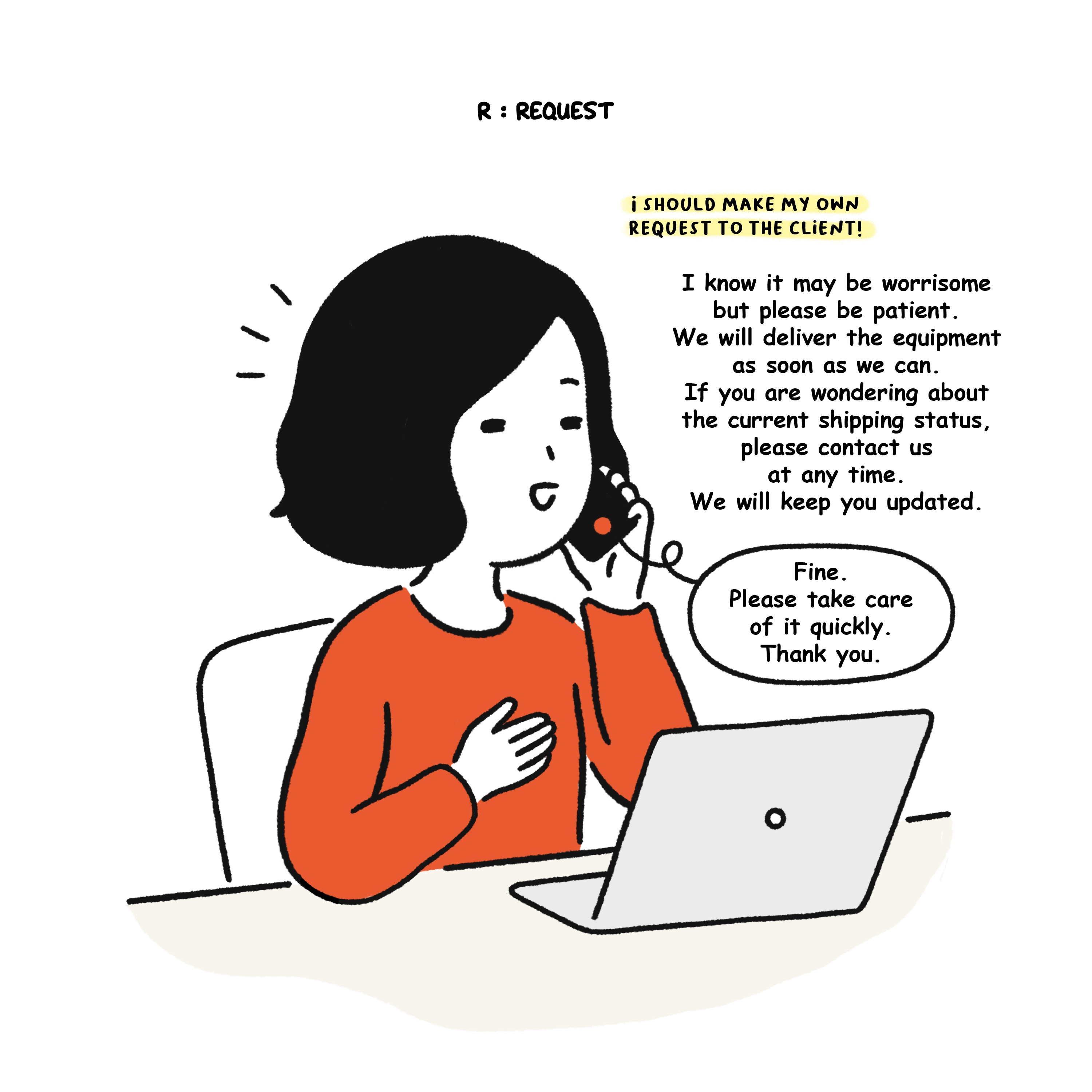Non-violent communication is a specific way of conversing that helps us to connect with others in ways that are innately compassionate and that allow us to understand ourselves more deeply. This type of communication also allows us to develop the ability to retain our sense of humanity even in difficult situations. Here, we introduce strategies of non-violent communication that can help customer center representatives to protect themselves and also strengthen their customer service skills.
Non-violent communication changes everything
Non-violent communication was developed by Dr. Marshall B. Rosenberg, a clinical psychologist and founder of the International Peace Foundation Center for Nonviolent Communication. In this context “nonviolence” can be exchanged for the word “compassion.” These words refers to a state in which any form of violence has subsided in our hearts, and we have returned to our innate peaceful state. Now, why do we need non-violent communication?
Non-violent communication helps us to take a step back from hurtful conversations, to understand ourselves more deeply, and to build close bonds with others that are characterized by compassion. The key is to start your communications with “I,” instead of “You.” If you hold a conversation centered on “I,” you can objectively convey your wishes and feelings without provoking the other person. Instead of reacting automatically during a conversation, you become more conscious of what you observe, feel, and want. By using non-violent communication in this way, you can develop communications skills that improve relationships that have deteriorated and maintain a spirit of goodwill even in difficult situations.
Non-violent communication changes the customer’s feelings
Non-violent communication can also be effective when talking with customers. It is a sophisticated skill you can use to protect yourself should you become involved in a conflict with a customer, and it can even change the heart of antagonistic customers, making them see your side of the situation. Now, what must you do to induce non-violent communication when you are talking to a customer? First, you must harness the emotion of compassion. Inherent only in humans, compassion is the ability to feel empathy for someone else. It can only be felt when all the violence in your heart has subsided. The conversation should move away from violence and head towards true and sincere communication, characterized by respect, consideration, and empathy. This is possible when you understand your feelings towards the other person, rather than trying to analyze and criticize them, and clearly state what you truly want from the other person.
It is the same with customers. Try to look at the customer, who may be unleashing their criticisms on you, with a feeling of compassion. Try to understand the customer’s words and feelings from a third-person point of view. Before letting your emotions control you, objectively look at the situation, and clearly present a solution to the customer. Then, you will see a light appear in the dark tunnel between you and the other person.





